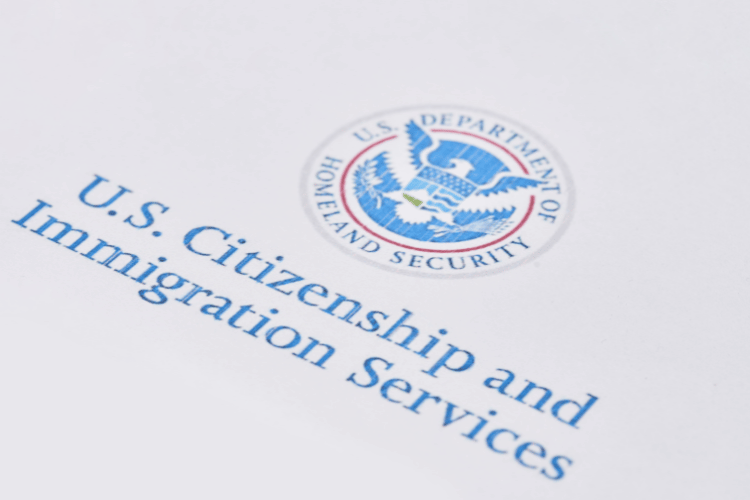
Translations for USCIS Applications: What You Need to Know
November 3, 2023

If you’re applying to the USCIS for citizenship, immigration, or green card, you’ll need to submit documents such as your birth certificate, academic transcripts, passport, marriage certificate, and more.
If said documents are in a foreign language, you won’t be able to submit them as they are. The USCIS has specific translation requirements for all foreign language documents.
Keep reading to know the USCIS translation requirements and how to get Certified Translations for USCIS Applications.
Certified Translations
A certified translation has a statement from the translator stating their accuracy and qualifications.
This statement should include the translator’s name, address, signature, and certification date. It should also have an official stamp from the translation provider.
Why Are Certified Translations Important?
Most formal or official procedures require certified translations. The officers who review your application documents at the USCIS need to understand the information in them to confirm your identity and your eligibility for applying.
A certified translator must translate the documents so the officer can guarantee their accuracy and genuineness. Note that the USCIS may reject your application if you provide poorly translated documents.
USCIS Requirements for Translation

According to the Code of Federal Regulations, you should accompany the documents submitted to USCIS containing a foreign language with a full English translation that is certified as complete and accurate.
The translator must also provide a certificate that proves their competence to translate from a foreign language to English.
Finally, the translator must include a “Certificate of Translation Accuracy.” The USCIS issues a standard template for this certificate.
The template includes the following sentence:
“I [Name] am competent to translate from [foreign language] into English and certify that the translation of the [document title] is true and accurate to the best of my abilities.”
The template has spaces for the translator and should include the signature, name, address, and date. UCIS also requires an original or copy of the translated document to compare for accuracy.
Finding a Reliable Translation Service
You can find several translation services, online and offline, that specialize in official documents for bureaus such as the USCIS.
Unfortunately, not all translation services are reliable. Some services may provide you with a translation of poor quality or even use fake credentials.
So, how do you avoid such risks and guarantee your translation service provider is trustworthy?
Before choosing a translation service, you must compare your options and do your research to ensure you’re getting an A1 service.
Here are some tips to follow:
Read Reviews
Read online reviews about the translation service and see what clients say about it. Try to look for rankings from independent review websites or blogs.
Request Samples
Another way to guarantee the translation service’s reliability is to ask for samples of their previous work.
If the translation service is professional, they shouldn’t have a problem giving you an example of their work.
You can also ask about the number of documents the company has translated. A reputable translation service should have thousands of translated documents.
Ask Questions
Prepare a list of questions about the translator’s quality and methods. Ensure that the company has a quality control team of editors or proofreaders that double-check the documents to ensure accuracy.
Ask About Their Privacy Policy
You should make sure that the translation service will protect your documents. Ask about the company’s privacy practices for storing and transmitting your documents.
Ask About their Price and Turnaround Time
A quality translation service should be able to provide your translation on time and for a reasonable cost.
However, you should still be wary of services offering extremely quick translations for cheap prices, as they’re likely to skimp on quality or use automated tools not allowed by USCIS.

Common Challenges in Document Translations
Translating a document for USCIS may seem simple, but it comes with some challenges. You need to be patient and attentive to the minor details to ensure that your translation process is successful.
Here are some of the common difficulties that people face when translating documents. It’s good to familiarize yourself with those pitfalls so you can avoid them.
Missing Information
The USCIS may have some requirements that aren’t part of your country’s documents. In such a case, you’ll need to provide some additional information to the translation service so they can include it in your translated document.
Make sure you read all of the USCIS requirements according to your application to ensure that nothing’s missing.
Incorrect Spelling
Some languages, such as Russian, Arabic, or Chinese, use a different alphabet than English.
This difference in writing can cause an incorrect spelling of your name or other words. You should use a standard spelling method on all official English documents.
Different Formatting
Some countries use different layouts in their writing than the United States. For instance, it’s common for many countries to use the (d/m/y) layout for their dates, however, in the U.S., they use the (m/d/y) layout.
So, when applying your documents to USCIS you must adhere to their regulations and make sure that the proper layouts are translated correctly and in line with American standards.
Cultural Challenges
The translation provider should understand the target language well enough to adapt the translation accordingly.
Some cultural differences lead to the misinterpretation of data which leads to some words getting lost in translation.
Always ask for a professional to double-check the translation to be sure that your documents are accurately translated.
Conclusion
Document translation is an essential step in the USCIS application process. When submitting documents in a foreign language, they must be accompanied by their certified translation according to USCIS requirements.
Additionally, the translator must provide a certificate of accuracy with the translation.
Finding a reliable translation service can be challenging, but if you do your research well and ask the right questions, you can ensure you’re using a reliable service.
When submitting your documents, check that you’ve included all the information, and provide the translator with the standard English spelling of your name and any other foreign names.
Finally, get a professional to proofread and edit your document to guarantee the best results.
